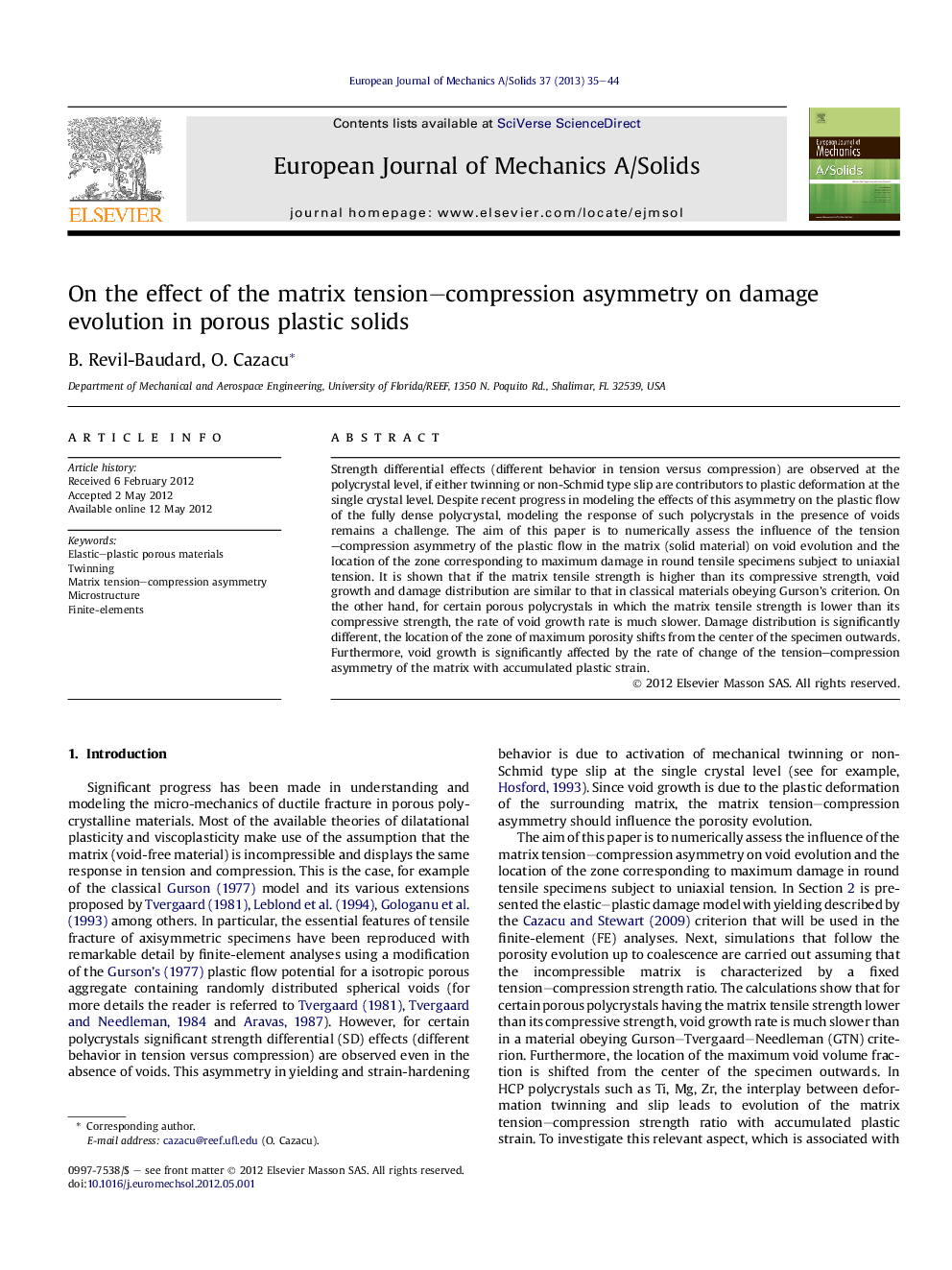| Article ID | Journal | Published Year | Pages | File Type |
|---|---|---|---|---|
| 778015 | European Journal of Mechanics - A/Solids | 2013 | 10 Pages |
Strength differential effects (different behavior in tension versus compression) are observed at the polycrystal level, if either twinning or non-Schmid type slip are contributors to plastic deformation at the single crystal level. Despite recent progress in modeling the effects of this asymmetry on the plastic flow of the fully dense polycrystal, modeling the response of such polycrystals in the presence of voids remains a challenge. The aim of this paper is to numerically assess the influence of the tension–compression asymmetry of the plastic flow in the matrix (solid material) on void evolution and the location of the zone corresponding to maximum damage in round tensile specimens subject to uniaxial tension. It is shown that if the matrix tensile strength is higher than its compressive strength, void growth and damage distribution are similar to that in classical materials obeying Gurson's criterion. On the other hand, for certain porous polycrystals in which the matrix tensile strength is lower than its compressive strength, the rate of void growth rate is much slower. Damage distribution is significantly different, the location of the zone of maximum porosity shifts from the center of the specimen outwards. Furthermore, void growth is significantly affected by the rate of change of the tension–compression asymmetry of the matrix with accumulated plastic strain.
► Matrix asymmetry affects damage rate. ► Damage different than GTN. ► Maximum damage zone shifts away from center.
